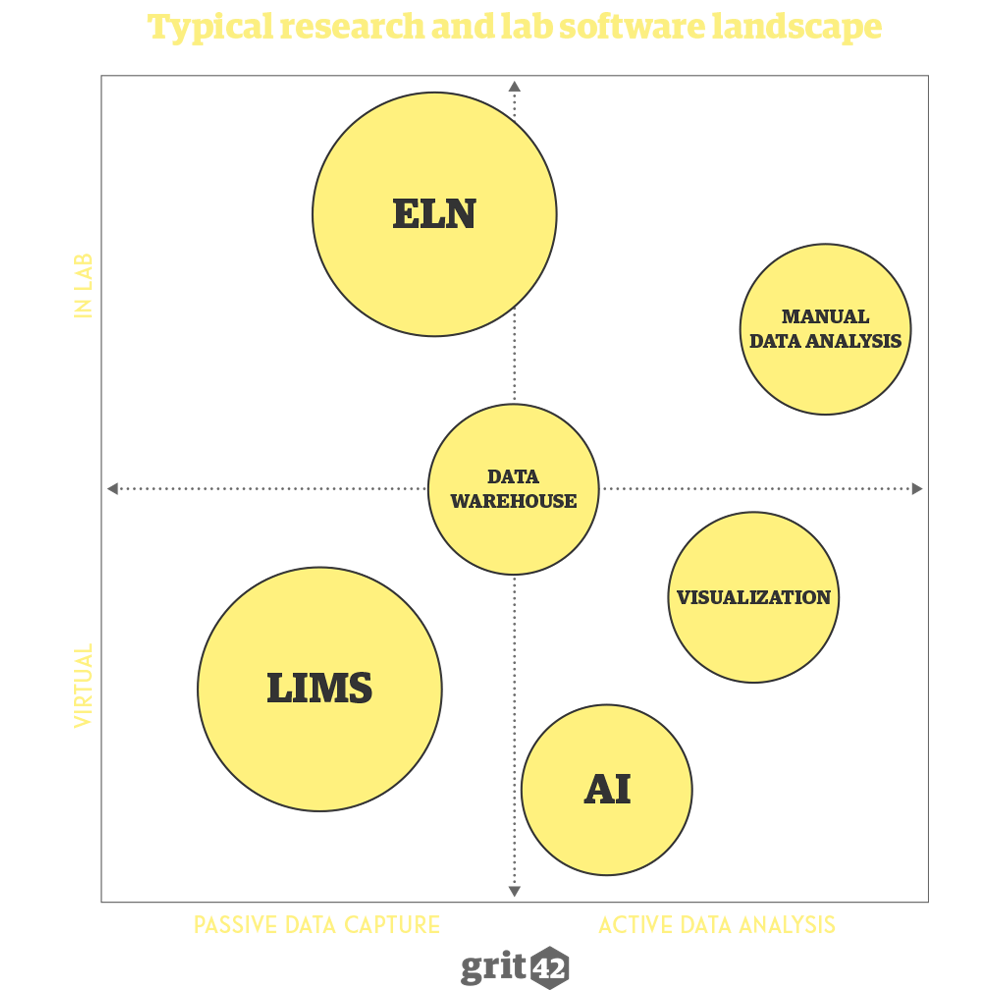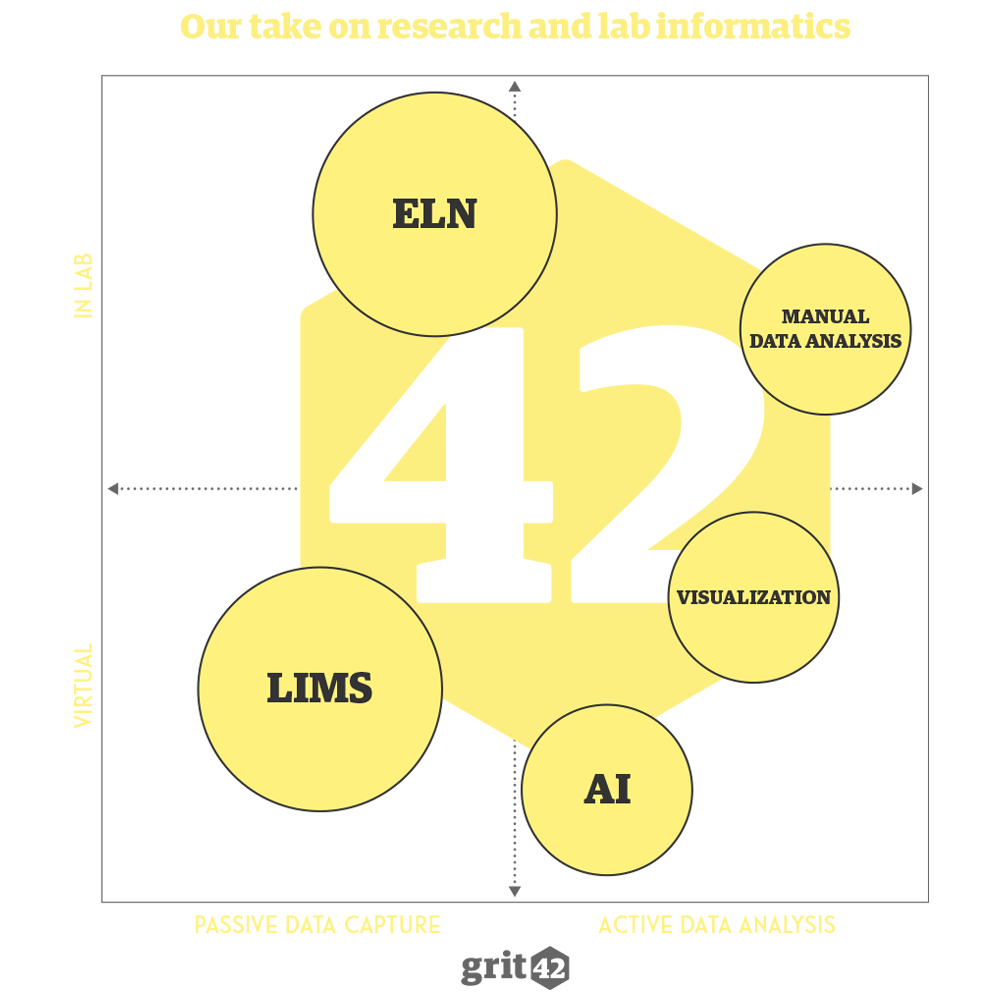
However, on a daily basis most of the biotech and pharma research labs still deal with Excel hell: The infinite and tedious copy/paste between different data sources.
Why?
Usually they have a patchwork of solutions covering an Electronic Lab Notebook (ELN), a Laboratory Information Management System (LIMS), and a Scientific Data Management System (SDMS) – possibly somewhat stitched together using custom developed software or more often: Leaving most of the data processing to manually curated spreadsheets.
A typical workflow for a scientist in such an environment looks like this: The ELN is effectively used as electronic paper so you basically just report information like we did this and this in that way for regulatory and IP protection reasons. The experimental data is often created by some kind of lab equipment and is automatically collected by the native software running the equipment. The scientist will therefore initiate the data analysis work by exporting the data to Excel for manual data analysis and manipulations often using fairly simple maths or stats. So, at this point we already have 3 different pieces of software in the mix.The resulting values from the experiment – ie. iC50, ED50, exposure, etc – will then be uploaded to a scientific data management system whereas the raw data and the data manipulations (algorithms) are left behind in Excel. Hence, individual spreadsheets will now de-facto become the long term storage place for the combination of raw data, algorithm and final results. Not very efficient for later cross experiment analysis.
In other words: A setup similar to this makes the resulting workflows inherently inefficient and rarely makes for happy scientists who feel they’re putting their education and intellectual capacity to good use.
Escape Death by Spreadsheets
So how do you change this fundamentally, rather than just making each component a bit more efficient? Our approach is doing anthropological observations in the labs, in order to understand the processes and needs of our customers. We actually spent the past 15 years fixing these broken workflows, resulting in profound knowledge on the subject, which we have turned into a software platform that works with you, rather than against you. Our platform enables you to stay within one piece of software for your experiments, quality control, and analysis work – avoiding the endless export/import steps.
We call it software for humans. And you’re welcome to take it for a spin – just get in touch.
